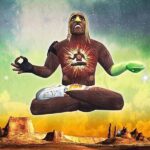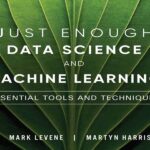- عنوان: Transport Economics
- نویسنده: Kenneth Button
- حوزه: حمل و نقل
- سال انتشار: 2022
- تعداد صفحه: 589
- زبان اصلی: انگلیسی
- نوع فایل: pdf
- حجم فایل: 6.92 مگابایت
اولین ویرایش اقتصاد حمل و نقل در سال 1982 ظاهر شد. این ویرایش چهارم، به روز رسانی موضوع را همراه با داده های فعلی، مطالعات موردی و نمونه ها ارائه می دهد. در مطالعه اقتصاد حمل و نقل در طول 40 سال گذشته چیزهای زیادی تغییر کرده است و تغییرات همچنان ادامه دارد. بسیاری از اینها نتیجه درک بهتر اقتصاد به طور کلی است. برخی دیگر بیشتر مربوط به حمل و نقل هستند و منعکس کننده تحولات اجتماعی، فنی و سیاسی هستند. به روز رسانی اقتصاد حمل و نقل برای انعکاس هر دو دسته از این تغییرات گسترده ضروری است. دادههای بهبودیافته و کاملتر، استفاده بیشتر از ریاضیات و اقتصاد سنجی پیشرفته، ظهور علم اقتصاد تجربی و پیشرفتهای فناوری رایانه، سختگیری فنی بیشتری را به اقتصاد وارد کرده است. و تغییرات بخشی از راه تغییر اقتصاد حمل و نقل بوده است. این نسخه اصلاح شده اقتصاد حمل و نقل برخی از این پیشرفت ها را منعکس می کند. اما اینها اصلاحات هستند تا انقلاب. بسیاری از درک اصلی ما از اقتصاد حمل و نقل دست نخورده باقی مانده است. به عنوان مثال، افزایش شناخت نقش اقتصاد رفتاری که اجازه می دهد برخی از مفروضات سنتی در مورد رفتار انسان را کاهش دهد، هنوز هم توسط بیشتر به عنوان یک اصلاح و نه یک تغییر پارادایم اصلی دیده می شود. اگرچه حمل و نقل مطابق با قوانین کلی اقتصادی است، اما حمل و نقل نیز بسیار زمینه ای است و زمینه ها تغییر می کند. به عنوان مثال، حتی در طول یک دهه پس از ظهور آخرین ویرایش این کتاب، تغییرات عمده ای در فناوری رخ داده است. اشکال جدیدی از حملونقل محلی از جمله شرکتهای شبکه حملونقل مانند Uber و Lyft و حالتهای حملونقل کوچک مانند اسکوترهای برقی ظهور کردهاند. توسعه تلفنهای هوشمند و بهویژه آیفون اپل در سال 2007 منجر به دسترسی تقریباً جهانی به سیستمهای موقعیتیابی جهانی و به همراه آن، اطلاعات بلادرنگ برای هدایت مسیر و ردیابی شده است. این امر هم بر روشهای برنامهریزی و تنظیم سفر افراد و هم بر روشهای طراحی و بهرهبرداری زنجیرههای تأمین کالا تأثیر گذاشته است. اینها و سایر تغییرات فناوری، بر ویژگی های بازارهای فردی تأثیر می گذارد و در این نسخه جدید مورد توجه قرار می گیرد. علاوه بر این، بسیاری از تهیه پیش نویس این نسخه در طول همه گیری کووید-19 انجام شد. تأثیر این، و اقدامات سیاستی مرتبط برای کاهش گسترش آن، پیامدهای فوری و آشکاری برای حمل و نقل در تمام سطوح تجمع داشت. در بسیاری از موارد، مانند رفت و آمد، خرید و گردشگری، سفرهای فردی را تا حد زیادی کاهش داد. در موارد دیگر، مانند حمل دارو و تحویل درب منزل غذا و سایر ملزومات، جابجایی کالا از انواع خاص بازارها افزایش یافته است. اقتصاد زنجیره تامین ابعاد جدیدی در زندگی ما پیدا کرده است. اینها مطمئناً مسائل لحظه ای هستند و نیاز به توجه فوری سیاستمداران و دست اندرکاران و همچنین پر کردن رسانه ها دارند. اما اثرات بلندمدت آنها کمتر قطعی است. در حالی که در زمان نگارش این مقاله، شواهدی مبنی بر بازگشت به چیزی شبیه آنچه که ممکن است «هنجار» تلقی شود که قبل از سال 2020 حاکم بود، وجود داشته است، جزئیات دقیقی از چگونگی ظاهر جهان پس از همهگیری هنوز نامشخص است. آنچه در اینجا فرض می شود این است که اصول اقتصاد حمل و نقل اساسا دست نخورده باقی می ماند حتی اگر پارامترهای کمی و کیفی پس از کووید تغییر کند. به عبارت دیگر، تئوری ها و روش شناسی های زیربنای اقتصاد حمل و نقل همچنان معتبر هستند، حتی اگر مقادیر پارامترهای فردی در بازارهای خاص تغییر کرده باشند. اصول اولیه عرضه و تقاضا همچنان پابرجاست: اگر قیمت بنزین افزایش یابد، حتی اگر تأثیر آن از نظر کمی با تجربیات گذشته متفاوت باشد، باز هم تقاضای کمتری خواهد داشت. این کتاب قالب 14 فصلی نسخه های اخیر را حفظ کرده است. این به طور کلی با یک فصل در هفته در هر ترم مطابقت دارد. فصل ها، اگرچه مسیر خاصی را دنبال می کنند، می توانند به طور مستقل به عنوان ماژول های مستقل نیز استفاده شوند. برای کمک به آموزش، 20 یا بیشتر «نمایشگاه» مستقل اکنون انواع مطالعات موردی و روایتها را برای تکمیل متن ارائه میکنند. اینها برای افزودن گوشت بیشتر به نظریه اقتصادی طراحی شده اند. مثالها و تصاویر بهروزتر نیز درک اصول اقتصادی را آسانتر کرده و به جذب مفاهیم اقتصادی کمک میکند. علاوه بر این، تغییراتی در سبک ارجاع نسبت به سه نسخه قبلی وجود دارد. من سبک راهنمای هاروارد (نقل به تاریخ نویسنده) را به جای سبک شیکاگو (پاورقی) اتخاذ می کنم. این بیشتر با استفاده در نوشتار اقتصادی مدرن مطابقت دارد. ارجاع دادن هنوز سبک است و بر روی مطالب مفید در هنگام پیگیری ایده ها و رویدادها تمرکز دارد. این کتاب ترکیبی از نثر، جداول، شکلها، نمودارها و معادلات است و هدف آن کمک به درک به جای غلبه یا تحت تأثیر قرار دادن خواننده با تکنیک پیشرفته است. مانند گذشته، امیدوارم که معلمان، دانش آموزان و سایر خوانندگان نسخه جدید اقتصاد حمل و نقل را جالب و مفید بدانند.
The first edition of Transport Economics appeared in 1982. This, the fourth edition, provides an update of the subject together with current data, case studies, and examples. A lot has changed in the study of transport economics over the past 40 years, and changes continue. Many of these are the result of a better understanding of economics in general. Others are more transport-specific and reflect social, technical, and political developments. An updating of Transport Economics is seen as necessary to reflect both of these broad categories of change. Improved and more complete data, greater use of mathematics and advanced econometrics, the emergence of experimental economics, and advances in computer technology have seen more technical rigor introduced into economics. And the changes have been part of the way transport economics has changed. This revised edition of Transport Economics reflects some of these developments. But these are refinements rather than revolutions. Much of our core understanding of transport economics remains intact. The increased recognition of the role of behavioral economics which allows relaxation of some traditional assumptions regarding human behavior is, for example, still seen by most as a refinement rather than a major paradigm shift. Although conforming to general economic rules, transport is also very contextual and contexts change. There have been, for example, major technology changes, even over the decade since the appearance of the last edition of this book. New forms of local transport have emerged including transportation network companies like Uber and Lyft and micromobility modes such as electricscooters. The development of the smartphone, and in particular Apple’s iPhone in 2007, has led to almost universal access to global positioning systems and, with this, real-time information for route guidance and tracking. This has affected both the ways individuals plan and adjust their travel as well as the ways in which freight-supply chains are designed and operated. These, and other technology shifts, influence the specifics of individual markets and are considered in this new edition. Additionally, much of the drafting of this edition took place during the Covid-19 pandemic. The impact of this, and the associated policy actions to reduce its spread, had immediate and obvious implications for transport at all levels of aggregation. In many cases, such as commuting, shopping, and tourism it reduced individual travel greatly. In other cases, as with the transport of medication and the home delivery of food and other supplies, it increased the movement of goods is specific types of markets. Supply-chain economics has taken on new dimensions in our lives. These are certainly matters of the moment and require the immediate attention of politicians and practitioners as well as filling the media. But their longer-term effects are less certain. While, at the time of writing, there has been evidence of a movement back to something like what may be considered ‘the norm’ that prevailed before 2020, the precise details of how the post-pandemic world will look are still unclear. What is assumed here is that the fundamentals of transport economics essentially remain intact even if the qualitative and quantitative parameters change post-Covid. In other words, the theories and methodologies underpinning transport economics remain valid, even though the magnitudes of individual parameters in specific markets may have changed. The basic principles of supply and demand still hold: if the price of gasoline rises, less will still be demanded even if the effect is quantitively different to past experiences. The book retains the 14-chapter format of recent past editions. This broadly conforms to a chapter a week per semester. The chapters, although following a particular path, can also be used independently as free-standing modules. To assist in pedagogy, 20 or so free-standing ‘Exhibits’ now provide a variety of case studies and narratives to supplement the text. These are designed to add greater flesh to the economic theory. More up-to-date examples and illustrations also make the understanding of economic principles easier and assist in the assimilation of economic concepts. Additionally, there are changes to the referencing style compared to the three previous editions. I adopt the Harvard Manual (author–date citation) style in place of the Chicago (footnote) style. This is more in line with usage in modern economic writing. The referencing is still light and focuses on material useful when following up ideas and events. The book remains a mixture of prose, tables, figures, graphs, and equations, the aim being to help understanding rather than to overpower or impress the reader with advanced technique. As in the past, I hope that teachers, students, and other readers will find the new edition of Transport Economics interesting and useful.
این کتاب را میتوانید بصورت رایگان از لینک زیر دانلود نمایید.
Download: Transport Economics



































نظرات کاربران